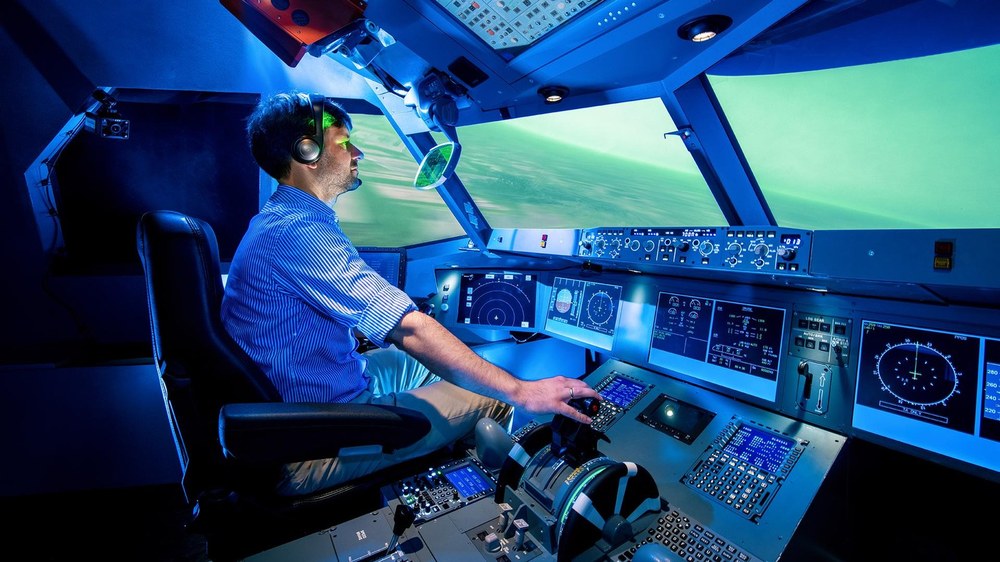Generic Experimental Cockpit (GECO)

The Generic Experimental Cockpit (GECO) is a modular cockpit simulator with flight-mechanical models of DLR test aircrafts. The flight-mechanical models are interchangeable, depending on the application required.
The GECO is particularly used to conduct simulations with human test subjects in order to evaluate new display and control concepts. Research also focuses on the development and evaluation of innovative operational procedures that can be applied in the future using new technologies. Examples include systems for the GPS-based determination of position, maneuvering area lighting, air-ground communication, collision detection and avoidance as well as new sensors.
Technical background
The geometry of the inner shell corresponds to that of an Airbus A320. However, the GECO uses six high-resolution 15.4" large-format LCD displays. Besides the standard control equipment (such as side sticks, tiller, thrust lever, flaps, gear, brakes), the installed operator control elements are also compatible with future developments in cockpit systems and as such conform to the design of an Airbus A350. This means, for example, that both pilots have keyboards and cursor control equipment. The radio management panels are fitted with displays and are freely programmable.
The outside view is simulated using three high-resolution projectors that project an image on a mirror system with a 6-meter diameter. This allows an area of 180° by 40° to be displayed, giving a realistic perception of depth (collimated visual system). To simulate the outside view the DLR tool ALICE is used, which enables the detailed 3D modeling of landscapes, airports and sensor data.
The simulator is fitted with a complete flight management system (FMS) that makes the high-precision, four-dimensional guidance of the aircraft possible. The standard cockpit displays are complemented by additional taxiing guidance and FMS displays. All of these displays and systems allow complete control of content and communication with other systems. Although the cockpit simulator is designed as an independent computer system, it can be connected to all platforms in the Institute and those of other facilities, such as the DLR tower simulator.
Different programs for simulating traffic in the air and on the ground can be added, as the project requires.
Furthermore, an eye movement measuring device is integrated that enables the pilots' gaze behavior to be closely analyzed.
A special feature is the head-up display (HUD), which allows primary flight information to be projected into the pilot's field of vision. As a result, pilots no longer have to turn their gaze away from the window to receive important information. This is particularly helpful in the final phase of bad weather approaches. HUDs can also display additional images from sensors; they are considered the technology of the future, also in terms of improved surface movement guidance.
The GECO can be converted into a helicopter simulator. An innovative helmet with a helmet-mounted display is used for research in the field of helicopters. Just as with the HUD, important information is projected into the field of vision of the helicopter pilots, thereby providing support during low visibility.
